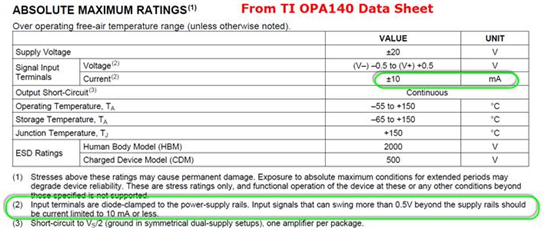Hello,
We have a 12V circuit that feeds into the 5V powered TLV2454 which is being used as a comparator.
In normal operation, the signal would stay within the 5V rail, but in an abnormal condition, the input could go to 12V.
If I have a input current limiting resistor, and had to allow a fault that took the resistor to 12V, would/can the TLV2454 withstand the input current through internal path(s) to clamp to its own supply rail?
I need to stress that this is NOT a normal condition…it is a condition that a customer could encounter though, if he were to disconnect a particular connector.
Also..I cannot just re-configure the circuit. Without going into a lot of detail…I have a 4.7V zener clamping the input, but the leakage of the zener (only about 15uA) is quite enough to cause a voltage error via the limiting resistance that feeds the OP Amp.
I would like to just remove the zener and let the input be limited by the resistor.
The wheels are rolling towards production and a minor component change is my hope.
Here is an excerpt from the TI OPA140 data sheet:
I am looking for similar info..at least some assurance that there is a clamping mechanism (like for ESD) and it certainly can be less than 10mA.
Thanks,
Don


